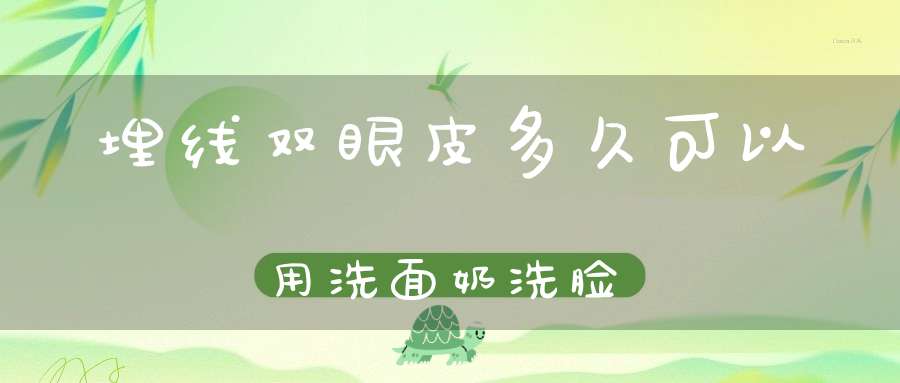一般过去时英语是什么
一般过去时英语,也被称为简单过去时,是一种英语语法的时态,用于描述过去完成的行为或状态。一般过去时的构成不复杂:规则动词后面加-ed,不规则动词则需要参照其变形规则。
构成一般过去时的规则是相当简单的。对于大多数规则动词,只需要在词尾添加 -ed 就可以表示过去时。例如,"walk" (走) 在过去时中变成了 "walked", "hope" (希望) 变成了 "hoped"。然后,有一些动词是不规则的,它们在过去时的形态各不相同,需要单独记忆。比如,"go" (去) 在过去时中是 "went", "see" (看) 变为 "saw"。
在句型结构方面,一般过去时英语的句型也十分简单。肯定句的结构为"主语+动词过去式+其他",如"She played the piano yesterday." (她昨天弹了钢琴)。否定句的结构为"主语+did not+动词原形+其他",如"We didnt go to the park." (我们没有去公园)。疑问句的结构为"Did+主语+动词原形+其他?",如"Did you watch the movie?"(你看过这部电影吗?)
一般过去时英语,是英语学习者必不可少的一部分知识,用它我们可以表述过去发生的事情,回应他人的询问,或是描绘过去的世界。学习它,不仅可以丰富我们的语言表达,更可以帮助我们更好地理解英语世界。
然而,我们仍需要注意,一般过去时并不适用于所有过去的场景。例如,对于习惯性、重复的过去行为,我们通常会使用过去进行时或过去完成时。另外,有些动词是没有过去式形态的,如must,should等情态动词和助动词。
每一个语言学习者都应该认识到,语言的学习是一项持续的工作,而这项工作就包括了对一般过去时不断的学习和掌握。逐渐的,你会发现,过去时其实就像一道桥,连接着你我与那些遥远的过去。
英语语法,一般过去时和一般将来时用什么?
一般过去时的用法
1)在确定的过去时间里所发生的动作或存在的状态。例如:时间状语有:yesterday, last week, an hour ago, the other day, in 1982等。例如:
Where did you go just now? 刚才你上哪儿去了?
2)表示在过去一段时间内,经常性或习惯性的动作。例如:
When I was a child, I often played football in the street. 我是个孩子的时候,常在马路上踢足球。
Whenever the Browns went during their visit, they were given a warm welcome.
那时,布朗一家无论什么时候去,都受到热烈欢迎。
3)句型:It is time for sb. to do sth "到……时间了" "该……了"。例如:It is time for you to go to bed. 你该睡觉了。
It is time that sb. did sth. "时间已迟了" "早该……了" ,例如It is time you went to bed. 你早该睡觉了。
would (had) rather sb. did sth. 表示宁愿某人做某事。例如:Id rather you came tomorrow.还是明天来吧。
4) wish, wonder, think, hope 等用过去时,作试探性的询问、请求、建议等,而一般过去时表示的动作或状态都已成为过去,现已不复存在。例如:I thought you might have some. 我以为你想要一些。
比较:Christine was an invalid all her life.(含义:她已不在人间。)
Christine has been an invalid all her life.(含义:她现在还活着)
Mrs. Darby lived in Kentucky for seven years. (含义:达比太太已不再住在肯塔基州。)
Mrs. Darby has lived in Kentucky for seven years. (含义:现在还住在肯塔基州,有可能指刚离去)
注意: 用过去时表示现在,表示委婉语气。
1)动词want, hope, wonder, think, intend 等。例如:
Did you want anything else? 您还要些什么吗?
I wondered if you could help me. 能不能帮我一下。
2)情态动词 could, would。例如:
Could you lend me your bike? 你的自行车,能借用一些吗?
一般将来时
1) shall用于第一人称,常被will 所代替。will 在陈述句中用于各人称,在征求意见时常用于第二人称。例如:
Which paragraph shall I read first? 我先读哪一段呢?
Will you be at home at seven this evening? 今晚七点回家好吗?
2) be going to +不定式,表示将来。
a. 主语的意图,即将做某事。例如:What are you going to do tomorrow? 明天打算作什么呢?
b. 计划,安排要发生的事。例如:The play is going to be produced next month。这出戏下月开播。
c. 有迹象要发生的事。例如:Look at the dark clouds, there is going to be a storm. 看那乌云,快要下雨了。
3) be +不定式表将来,按计划或正式安排将发生的事。例如:
We are to discuss the report next Saturday.我们下星期六讨论这份报告。
4) be about to +不定式,意为马上做某事。例如:
He is about to leave for Beijing. 他马上要去北京。
注意:be about to do 不能与tomorrow, next week 等表示明确将来时的时间状语连用。英语的:一般过去时,是什么意思?
一般过去时表示过去某个时间发生的动作或存在的状态。常和表示过去的时间状语连用。如:last year, yesterday.
一般过去时由动词的过去式表示,动词be有was, were两个过去式,was用于第一、三人称单数,were用于其他情况。在构成否定及疑问句时,一般都借助助动词did, 动词be有其独特的疑问及否定形式(基本上和一般现在时一致)。
一般过去时的用法
1)在确定的过去时间里所发生的动作或存在的状态。
时间状语有:yesterday, last week, an hour ago, the other day, in 1982等。
Where did you go just now?
2)表示在过去一段时间内,经常性或习惯性的动作。
When I was a child, I often played football in the street.
Whenever the Browns went during their visit, they were given a warm welcome.
3)句型:
It is time for sb. to do sth "到……时间了" "该……了"
It is time sb. did sth. "时间已迟了" "早该……了"
It is time for you to go to bed. 你该睡觉了。
It is time you went to bed. 你早该睡觉了。
would (had) rather sb. did sth. 表示宁愿某人做某事
Id rather you came tomorrow.
4) wish, wonder, think, hope 等用过去时,作试探性的询问、请求、建议等。
I thought you might have some. 我以为你想要一些。
比较:
一般过去时表示的动作或状态都已成为过去,现已不复存在。
Christine was an invalid all her life.
(含义:她已不在人间。)
Christine has been an invalid all her life.
(含义:她现在还活着)
Mrs. Darby lived in Kentucky for seven years.
(含义:达比太太已不再住在肯塔基州。)
Mrs. Darby has lived in Kentucky for seven years.
( 含义:现在还住在肯塔基州,有可能指刚离去)
注意: 用过去时表示现在,表示委婉语气。
1)动词want, hope, wonder, think, intend 等。
Did you want anything else?
I wondered if you could help me.
2)情态动词 could, would.
Could you lend me your bike?小学英语中的一般过去时
一般过去时
1.概念:
过去某个时间里发生的动作或状态;过去习惯性、经常性的动作、行为;
2.时间状语:
ago, yesterday, the day before yesterday, last week,last(year, night, month…), in 1989, just now, at the age of 5, one day, long ago, once upon a time, etc.
3.基本结构:
be动词;行为动词 的过去式
4.否定形式
:was/were+not;在行为动词前加didnt,同时还原行为动词。
5.一般疑问句:
was或were放于句首;用助动词do的过去式did 提问,同时还原行为动词。
6.例句:
She often came to help us in those days.
I didnt know you were so busy.
一般过去时表示(1)过去某个特定时间发生,并且一下子就完成了的动作(即:非持续性动作),也可以表示(2)过去习惯性的动作。一般过去时不强调动作对现在的影响,只说明过去。
句式:主语+过去动词+其他
I had a word with Julia this morning.今天早晨,我跟朱丽亚说了几句话。
(1) He smoked many cigarettes a day until he gave up. 他没有戒烟的那阵子,
抽烟抽得可凶了。
(2) 一般过去时常与表示过去的时间状语或从句连用,如:yesterday, last week, in 1993, at that time, once, during the war, before, a few days ago, when 等等。
句子中谓语动词是用一般过去时还是用现在完成时,取决于动作是否对现在有影响。
Have you had your lunch? 你吃过午饭了吗?(意思是说你现在不饿吗?)
Yes, I have. 是的,我已经吃过了。(意思是说已经吃饱了,不想再吃了。)
When did you have it? 你是什么时候吃的?(关心的是吃的动作发生在何时。)
I had it about ten minutes ago. 我是大约十分钟以前吃的。
Used to do something 表示过去常做而现在已经停止了的习惯动作。
I used to work fourteen hours a day. 我过去常常一天干十四个小时。
I ate it at 6:45。我在六点四十五分吃了。
一般过去时的基本用法
1 带有确定的过去时间状语时,要用过去时
如:yesterday(昨天)、two days ago…(两天前…… )、last year…(去年…)、the other day(前几天)、once upon a time(过去曾经)、 just now(刚才)、in the old days(过去的日子里)、before liberation(解放前…)、 When I was 8 years old(当我八岁时…)、at+一个时间点
Did you have a party the other day?
前几天,你们开了晚会了吗?
Lei Feng was a good soldier.
雷锋是个好战士。
注意
在谈到已死去的人的情况时,多用过去时。
2 表示过去连续发生的动作时,要用过去时
这种情况下,往往没有表示过去的时间状语,而通过上下文来表示。
The boy opened his eyes for a moment,looked at the captain,and then died.
那男孩把眼睛张开了一会儿,看看船长,然后就去世了。
3 表示过去一段时间内经常或反复的动作
常与always,never等连用。
Mrs. Peter always carried an umbrella.
彼得太太过去老是带着一把伞。
(只是说明她过去的动作,不表明她现在是否常带着伞。)
比较
Mrs. Peter always carries an umbrella.
彼得太太老是带着伞。
(说明这是她的习惯,表明她现在仍然还习惯总带着一把伞)
I never drink wine.我以前从不喝酒。
(不涉及到现在,不说明现在是否喝酒)
4 如果强调已经终止的习惯时要用used to do
He used to drink.
他过去喝酒。
(意味着他现在不喝酒了。喝酒这个动作终止了)
I used to take a walk in the morning.
我过去是在早晨散步。
(意味着现在不在早晨散步了)
比较:
I took a walk in the morning.
我曾经在早晨散过步。
(只是说明过去这一动作)
5 有些句子,虽然没有表示过去确定时间的状语,但实际上是指过去发生的动作或存在的状态的话,也要用过去时,这一点,我们中国学生往往出错,要特别注意!
I didnt know you were in Paris.
我不知道你在巴黎。
(因为在说话时,我已经知道你在巴黎了。这句话指的是说话之前,所以只能用过去时表示。实际上,这句话暗指:But now I know you are here.)
I thought you were ill.
我以为你病了呢。
(这句话应是在说话之前,我以为你病了。但是现在我知道你没病)
辨别正误
Li Ming studied English this morning.
(把此句变为一般疑问句)
(×)1.Did Li Ming studied English this morning?
(动词应该用原形)
(×) 2. Does Li ming Study English this morning?
(时态应该用原句子的时态)
(×) 3.Was Li Ming studied English this morning?
(应该用一般动词,而不是be动词)
(О) 4.Did Li Ming study Enghish this morning?
一过:在过去发生的动作。
主动:
肯定① be 分为was,were ② v+ed
否定① was/were not ② didn’t+v
疑问① was/were+ 主 ② did+主+V
时状:
1. yesterday (morning,afternoon,evening)
2. the day before yesterday
3. last night (week,Sunday,weekend,month,winter,year,centeury 世纪)
4. ago
5.in 1980 (过去年份)
6.this morning/afternoon/evening
7.when引导的状语从句 (过去)
8.in the past
9.just now
10.the other day -- a few days ago
11.at the age of 10 (过去年龄段)
12.in the old days
动词过去式规则变化
1 直接加ed eg:work worked worked
2 以不发音的e结尾的,+d eg:live lived lived
3 以辅音字母+y结尾的,变y为i加ed eg:study stuied stuied
4 以重读闭音节结尾的,双写最后的辅音字母+ed eg: stop stopped stopped
不规则变化
例如相等 eg:cut cut
read read<注:read和read读音不同!>
sit sat
句型结构
1.一般句子
I watched TV last night.
2.一般疑问句
Did you watch TV last night?
3.there be 句型
There was an apple on the table last night.
Was there an apple on the table last night?
一般过去时口诀
一般过去时并不难,表示过去动作、状态记心间。
动词要用过去式,时间状语句末站。
否定句很简单,didnt 站在动词原形前,其它部分不要变。
一般疑问句也好变,did放在句子前,主语、动词原形、其它部分依次站。
特殊疑问句也简单,疑问词加一般疑问句记心间。
最后一条请注意,动词过去式要牢记。以上内容就是易趣百科为大家带来一般过去时英语是什么的全部内容,希望会对大家有所帮助,更多相关内容请关注易趣百科。




